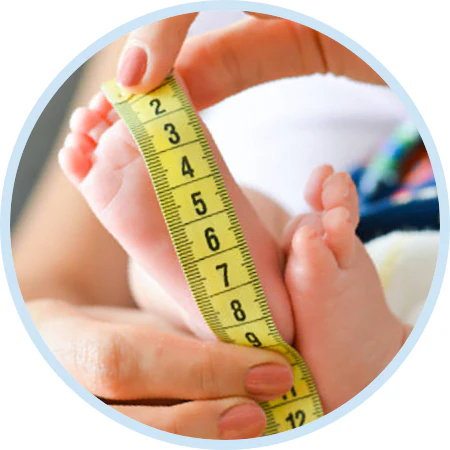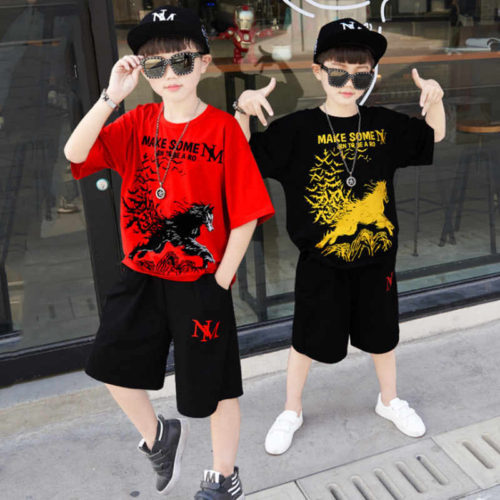To measure baby shoe size, trace your baby’s foot on paper. Then, measure the longest part and consult a sizing chart.
Finding the right shoe size for your baby is important. Proper fitting shoes support healthy foot development. Babies grow quickly, making regular measurements essential. A snug fit allows for comfort and mobility. Too small shoes can cause pain or problems.
Use simple tools like a ruler or tape measure. It’s best to measure both feet, as they may differ in size. Always check a brand’s specific sizing chart, as sizes can vary. This guide helps ensure your baby walks comfortably and confidently. Happy shoe shopping!
Table of Contents
The Importance Of Proper Fit For Baby Shoes
Choosing the right baby shoe size is crucial for growth and development. Shoes that fit well support healthy foot formation. Babies grow quickly, so measure their feet often. A proper fit helps prevent discomfort and injury.
Parents should look for signs of tightness or rubbing. These signs indicate the shoes may be too small. Check for enough wiggle room in the toe area. Shoes should be snug but not too tight.
Regularly measuring your baby’s feet helps ensure they wear the right size. This practice can promote comfort and confidence while walking. Remember, a happy baby means a happy parent!
When To Start Measuring Baby’s Feet
Babies grow quickly. Measuring their feet is important for a perfect shoe fit. Look for signs that show it’s time for the first pair. If your baby starts to crawl or walk, it’s a good time. Check for signs of discomfort or irritation in the feet.
Regular size checks help keep your baby comfortable. Feet grow fast, so measure every few months. A good rule is every 2 to 3 months. This ensures shoes fit well and support growth.
| Age | Frequency of Size Checks |
|---|---|
| 0 – 6 months | Every 2 months |
| 6 – 12 months | Every 3 months |
| 1 – 2 years | Every 3 to 4 months |
Tools And Materials Needed
To measure your baby’s shoe size, gather a few essential tools. You will need a measuring tape or a ruler. A piece of paper and a pen for marking are also helpful. Baby shoes to try on can assist in finding the right fit.
For DIY options, use a regular piece of cardboard. Draw the outline of your baby’s foot on it. Cut out the shape and use it to find the best shoe size. Socks can be included for a better fit. Remember to measure both feet, as they may differ in size.
Preparing To Measure Your Baby’s Feet
To measure your baby’s feet, create a calm environment. Soft lighting and quiet sounds help your baby relax. Choose a time when your baby is happy and alert. Avoid measuring during nap times or when they are hungry.
Ensure your baby’s comfort by using a soft surface. A cozy blanket or a padded mat works well. Make sure your baby is in a good mood and willing to cooperate. You can even distract them with a toy or gentle music.
Step-by-step Guide To Measuring
Start by having your baby sit on a flat surface. Make sure their foot is flat. Use a piece of paper to trace around the foot. Keep the pencil straight up to get an accurate shape.
Next, measure the length from the heel to the longest toe. Mark this point clearly. Also, measure the width at the widest part of the foot. This helps ensure a good fit.
To get the correct size, compare your measurements to a shoe size chart. Remember that baby feet grow quickly. It’s best to check the size every few months.

Credit: babymoo.in
Understanding Baby Shoe Sizing
Understanding baby shoe sizing is important for comfort and growth. Each brand has its own size chart. Always check the specific size chart for the shoes you want.
Interpreting size charts can be tricky. Sizes often vary between US, UK, and EU systems. Here’s a quick reference table:
| US Size | UK Size | EU Size |
|---|---|---|
| 0-3 months | 0 | 16 |
| 3-6 months | 1 | 17 |
| 6-12 months | 2 | 18 |
| 12-18 months | 3 | 19 |
To convert between sizes, know that US sizes are generally one size larger than UK sizes. For EU sizes, add 15 to the UK size. Always measure your baby’s foot before buying shoes.
Tips For Measuring A Wriggling Baby
Measuring a wriggling baby’s foot can be tricky. Use soft measuring tape to avoid discomfort. Gently wrap the tape around the widest part of the foot. This helps you find the best fit.
Another method is to use a piece of paper. Place the baby’s foot on the paper. Trace around it with a pencil. Measure the length from the tip of the longest toe to the heel.
Keep the baby entertained during this process. Toys or songs can help them stay calm. Comfort is key, so avoid tight grips while measuring.
Troubleshooting Common Measuring Challenges
Measuring a baby’s shoe size can be tricky. Fidgety behavior makes it hard to get accurate measurements. Try using a soft measuring tape to wrap around the foot. Keep the baby entertained with toys or songs. This helps them stay still during the measurement.
Growth spurts happen quickly with babies. Always measure feet every few months. New shoes should fit snugly but not too tight. A thumb’s width should fit between the heel and the shoe. This ensures comfort as the baby grows.
The Role Of Socks In Measuring
Measuring baby shoe size requires careful attention to sock thickness. Thin socks provide a more accurate fit. Thick socks can make shoes feel tighter than they are.
Choosing the right sock is important. Use medium thickness socks for the best results. Avoid very thick or very thin socks while measuring.
Measuring with socks gives a realistic fit. Always measure both with and without socks. This helps find the perfect shoe size for your baby.
When To Upsize Baby’s Shoes
Watch for signs that shoes are too small for your baby. Common signs include red marks on the feet and blisters. If your baby frequently kicks off their shoes, they might be uncomfortable. Look for squished toes or limited movement in the shoes.
Planning for future growth is essential. Babies grow quickly, so measure their feet every few months. A good rule is to buy shoes that are half a size larger than their current size. This extra space allows for natural growth and comfort.
Online Resources And Tools
Many parents find measuring baby shoe size challenging. Printable size guides are available online. These guides help parents measure their baby’s feet accurately. Just print the guide and follow the instructions.
Mobile apps for sizing can also be useful. Some apps allow you to measure feet using your smartphone’s camera. This method is quick and often very accurate. Check app reviews to find the best options.
Using these tools makes finding the right shoe size easier. Correct sizing is important for your baby’s comfort and foot health.

Credit: www.striderite.com
Shopping For Baby Shoes With Confidence
Shopping for baby shoes can be fun and exciting. Start by evaluating shoe quality. Look for soft materials that allow for breathability. Shoes should have a flexible sole to support natural movement. A good fit is essential for comfort and development.
Finding size-inclusive options is also important. Many brands offer a wide range of sizes. Online stores often have detailed size charts. Check reviews to see what other parents say about sizing. Local stores may provide fitting services. This helps ensure the best fit for your baby’s feet.
How To Verify Fit After Purchase
To ensure a comfortable fit for your baby, check the toe room. Press gently on the front of the shoe. There should be enough space for the toes to wiggle. If the toes touch the end, the shoes are too small.
Try the thumb test. Place your thumb behind the heel. There should be about a finger’s width of space. This indicates enough room for growth.
Observe your baby while they walk. Signs of discomfort include dragging feet or frequent stumbling. If your baby seems uneasy, consider a different size.
Finally, check for any visible red marks on the feet. These can indicate that the shoes are too tight. Always prioritize your baby’s comfort and safety.
Caring For Growing Feet
Regularly check your child’s feet for any signs of discomfort. Growing feet need constant care and attention. Measure their shoe size every few months to ensure a proper fit.
Wearing the right shoes is important for foot health. Look for shoes with a flexible sole and good arch support. Choose breathable materials to keep feet dry and comfortable.
Always allow some wiggle room for toes. A thumb’s width between the shoe end and the longest toe is ideal. Avoid tight shoes, as they can cause pain and deformities.
Visit a professional if unsure about shoe size or fit. They can provide expert advice on supportive footwear. Healthy feet lead to a happy child!
Credit: birdrockbaby.com
Frequently Asked Questions
How Do I Measure My Baby’s Foot Size?
Use a ruler or measuring tape to measure the length from heel to toe while the baby is standing.
What Size Shoe Should I Buy For My Baby?
Refer to a shoe size chart based on the foot measurement to find the appropriate size.
How Often Should I Measure Baby Shoe Size?
Measure every 2-3 months, as babies’ feet grow quickly during their first year.
Can I Use Regular Shoes For Babies?
Regular shoes are not recommended; choose soft, flexible shoes designed specifically for infants’ developing feet.
What If My Baby’s Feet Are Different Sizes?
Select shoes that fit the larger foot comfortably, as it’s common for babies to have slight size variations.
Conclusion
Measuring your baby’s shoe size is essential for their comfort. Properly fitting shoes help support healthy foot development. Use a ruler or a measuring chart for accuracy. Check sizes often, as little feet grow quickly. With the right size, your baby can explore the world happily and safely.







